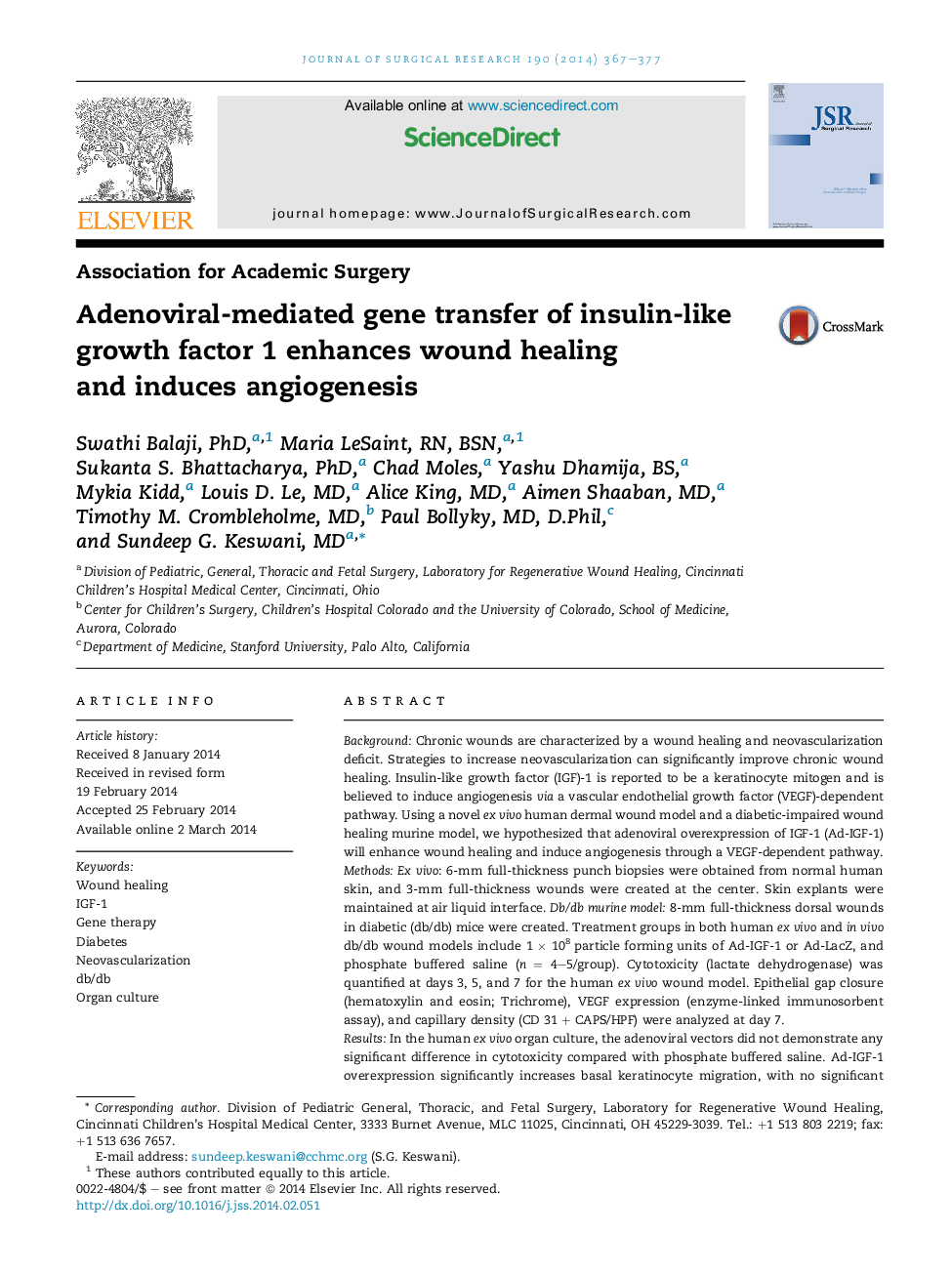| کد مقاله | کد نشریه | سال انتشار | مقاله انگلیسی | نسخه تمام متن |
|---|---|---|---|---|
| 4300205 | 1288414 | 2014 | 11 صفحه PDF | دانلود رایگان |
BackgroundChronic wounds are characterized by a wound healing and neovascularization deficit. Strategies to increase neovascularization can significantly improve chronic wound healing. Insulin-like growth factor (IGF)-1 is reported to be a keratinocyte mitogen and is believed to induce angiogenesis via a vascular endothelial growth factor (VEGF)-dependent pathway. Using a novel ex vivo human dermal wound model and a diabetic-impaired wound healing murine model, we hypothesized that adenoviral overexpression of IGF-1 (Ad-IGF-1) will enhance wound healing and induce angiogenesis through a VEGF-dependent pathway.MethodsEx vivo: 6-mm full-thickness punch biopsies were obtained from normal human skin, and 3-mm full-thickness wounds were created at the center. Skin explants were maintained at air liquid interface. Db/db murine model: 8-mm full-thickness dorsal wounds in diabetic (db/db) mice were created. Treatment groups in both human ex vivo and in vivo db/db wound models include 1 × 108 particle forming units of Ad-IGF-1 or Ad-LacZ, and phosphate buffered saline (n = 4–5/group). Cytotoxicity (lactate dehydrogenase) was quantified at days 3, 5, and 7 for the human ex vivo wound model. Epithelial gap closure (hematoxylin and eosin; Trichrome), VEGF expression (enzyme-linked immunosorbent assay), and capillary density (CD 31 + CAPS/HPF) were analyzed at day 7.ResultsIn the human ex vivo organ culture, the adenoviral vectors did not demonstrate any significant difference in cytotoxicity compared with phosphate buffered saline. Ad-IGF-1 overexpression significantly increases basal keratinocyte migration, with no significant effect on epithelial gap closure. There was a significant increase in capillary density in the Ad-IGF-1 wounds. However, there was no effect on VEGF levels in Ad-IGF-1 samples compared with controls. In db/db wounds, Ad-IGF-1 overexpression significantly improves epithelial gap closure and granulation tissue with a dense cellular infiltrate compared with controls. Ad-IGF-1 also increases capillary density, again with no significant difference in VEGF levels in the wounds compared with control treatments.ConclusionsIn two different models, our data demonstrate that adenoviral-mediated gene transfer of IGF-1 results in enhanced wound healing and induces angiogenesis via a VEGF-independent pathway. Understanding the underlying mechanisms of IGF-1 effects on angiogenesis may help produce novel therapeutics for chronic wounds or diseases characterized by a deficit in neovascularization.
Journal: Journal of Surgical Research - Volume 190, Issue 1, July 2014, Pages 367–377
